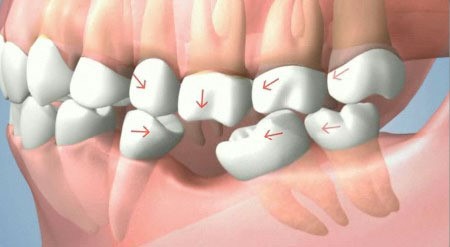
23 Mar Why Replace a Missing Tooth?
When it comes to whether to replace a missing tooth or not, it is usually in the person’s best interests to do so. The causes of losing adult (permanent) teeth are many, including gum disease, bone loss, and an external trauma, such as a fall. For treatment options, dentures and implant-supported bridges are likely choices upon the recommendation of a cosmetic dentist. While most people do not pursue tooth replacement unless it is a front tooth that is missing, there are more reasons than just aesthetics that warrant replacing missing permanent teeth, including bite collapse and temporomandibular joint disorder (TMJ, TMD) that causes jaw pain.


What are the Consequences of Tooth Loss?
Dentists recommend you replace a missing tooth not just for the sake of improving the appearance of a smile but also because the gap within your mouth can later snowball into significant dental problems that range from alterations in speech to a misaligned bite, bone loss, and the onset of TMD dysfunction.
Also, if the gap of a missing tooth goes unfilled, the surrounding teeth can begin to move into the open space. When these teeth turn off their vertical axis, they become misaligned, and the result is an improper bite that results in TMJ and associated jaw pain.
These teeth that have drifted over can also create pockets that are hard for the toothbrush or floss to reach, creating a breeding ground for plaque, gum disease, and cavities. Without missing tooth replacement, bone reabsorption can happen, which means that the bone that supports the absent tooth slowly starts to wear away as it no longer serves a purpose. As bone loss occurs, the jaw’s height decreases and surrounding teeth can become loose.
When TMJ Results From a Missing Tooth
When a tooth is lost, many people experience a shift in their bite. The improper bite is called malocclusion. The shifting gradually occurs so it may go unnoticed by a person for years before jaw pain sets in that are symptomatic of TMD. Thankfully, there are non-surgical dental treatments to treat TMJ, and our office offers several options.
Ways to Replace a Missing Tooth
Contemporary treatments include bridges and dental implants, rather than putting an emphasis on dentures as in years past. If dentures are the best choice for you, though, as a cosmetic dentist will help you to determine, the modern dentures are less bulky than previously and look quite similar to real healthy teeth.
A bridge, although it can be thought of as a kind of denture, provides a more permanent solution than removable dentures. The dental bridge attaches to neighboring teeth or implants to fill the hole caused by the missing tooth. Customizable bridges that fit the upper and lower arch are available too as a full or part of a set of artificial teeth.
When jawbone loss occurs, a bone graft may be an essential step before pursuing the dental implant or another method of fixing the hole in the lost tooth.


